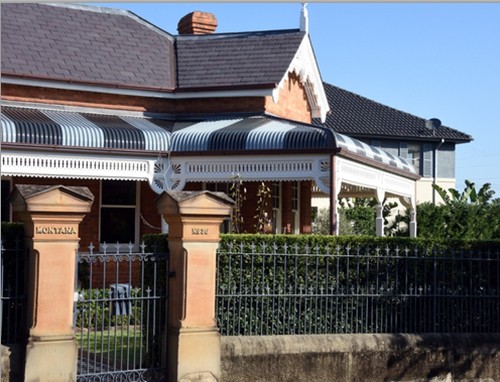‘Present at the Creation’
It falls to few of us to be present at a significant moment in history, but that is the subject of my heritage item today. Let me tell you how it came about.
In 1967 Sandra and I were living in Glebe, then a rather run-down inner-Sydney suburb – a ‘slum’ in fact – adjacent to Sydney University.
We had moved there partly because we were planning to take advantage of the Wyndham ‘gap year’ to do Government 1 (we were both very interested in politics) in a year when the annual intake of first-year students would be delayed for 12 months. The idea of being able to walk to a depleted university attracted us.
We were also very much into renovating terrace houses, and yearned to have one of our own to ‘do up’. (We had come from Edgecliff, where we rented, yet there, an un-done-up terrace cost over $30,000, while the next suburb to be ‘gentrified’, Balmain, was also well out of our price-range.)
But Glebe had yet to be yupped, and so we managed to find a magnificent, almost derelict, terrace in Toxteth Rd Glebe – the best part of Glebe – for $13,500, the deposit for which ($1,350) we could just manage to scrape together, with the help of a $750 ‘top-up’ from Canberra.
Not long after we began our renovating, we met Bernard Smith, who had recently bought a house in the next street, and was waiting to take over in 1968 as the inaugural Professor of Fine Arts at Sydney University.
He and Sandra met at an anti-Vietnam rally at Newington College and she told Bernard that what Glebe needed was a local heritage body to help it come up in the world, like the successful Paddington Society, which we had been members of.
Bernard agreed and, to cut a long story short, we decided to form the Glebe Society, of which Bernard became president, Sandra secretary, while I took on the role of vice-president in charge of strategy and local politics.
One Sunday morning Bernard called around, and he and I decided to take a stroll through what was now ‘our bailiwick’. (Bernard was particularly interested in the streetscape of Glebe, and was later to write a book describing it, entitled The Architectural Character of Glebe.)
We walked down Toxteth Rd – which was particularly well-endowed with a variety of house-styles dating from the 1880s going into the 1920s – and turned left into Bell St. Then we paused on the corner of Boyce St.
Opposite was a large (sprawling, in fact) bungalow at number 36 Boyce St. It had a name on its gate which read ‘Montana’.

Bernard gazed at it, and pondered. ‘Do you know what style of house that would be called today?’ he asked. (Nominally, he directed the question at me, as I was standing next to him, though in fact he was addressing the vacant air around us, my presence being merely coincidental.)
‘No,’ I responded (the conversation, such as it was, was mainly monosyllabic on my part).
He thought for a few moments, then said: ‘Today that would be called Queen Anne style.’ (I was to be one of Bernard’s first students in 1968 in a first-year course that included architecture.)
‘Yes, Bernard,’ I said. He thought for a few more moments.’That’s not a very appropriate name for a type of Australian bungalow,’ he said. ‘No,’ I agreed. He thought some more, gazing into the middle-distance.
Then he went on: ‘I think it should have a more Australian name.’ (Bernard, whose mother was Irish, was a committed republican.). ‘Yes, Bernard,’ I said.
‘You know,’ he mused, ‘that house was probably built around the turn of the century.’ (It was actually built, I later discovered, in 1892.)
‘That was the time of Federation,’ he decided. Then he added: ‘I think it should be called Federation-style,’ he said firmly.
And so it – and a million other such homes – have been thus called ever since (once Bernard’s book, in which he christened that style of architecture, was published in 1973). However, I was present at its creation.









One comment. Please add yours.
This home is my family ‘ Whetton’ That being Alfred Whetton. The other ‘Montana’is in Cremorne.